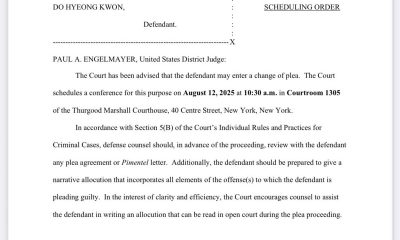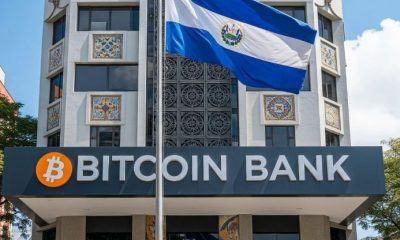

De-fi
Ethereum’s Buterin Presses for Faster L2 Withdrawals to Curb Bridge Reliance – Crypto News
Vitalik Buterin pushes for faster withdrawals, highlighting the challenge of improving speed while many users still rely on cross-chain bridges.
Ethereum’s scaling roadmap is entering a faster phase, and the network’s co-founder, Vitalik Buterin, wants the clock to tick in seconds, not days.
In an X post on Aug. 6, the Ethereum co-founder said that many major Layer 2 (L2) networks have now reached “Stage 1,” a milestone that marks their operational maturity on the network’s scaling roadmap.
According to analytics platform L2Beat, as of this week, all six rollups affected by recent Stage 1 requirement changes — Base, Optimism, Unichain, Scroll, Inco and Kinto — have completed the necessary upgrades and are now fully compliant.
The next objective, Buterin argued in his X post, should be to cut withdrawal times to under an hour in the short term and about 12 seconds in the medium term, changes he called more important than advancing to Stage 2.
Risky Dependency
Stage 1 is part of a multi-step framework for Ethereum rollups, a type of L2 scaling solution for Ethereum. The three-stage framework was first outlined in late 2022 on the Ethereum Magicians forum and later formalized by L2Beat, starting from experimental deployments, dubbed Stage 0, through operational but still improving systems, Stage 1, to fully trustless, fully verified rollups, known as Stage 2.
Buterin says achieving near-instant withdrawals requires replacing optimistic proof systems, which take multiple days to finalize, with validity, or zero-knowledge proof systems. As L2s develop faster withdrawal options, many users still seem to prefer cross-chain bridges to avoid lengthy delays.
DefiLlama data show that Ethereum’s bridged TVL — the total value locked in bridge contracts moving assets across chains, not including Ethereum-based tokens — at around $500 billion, roughly twice the size of Ethereum’s native on-chain TVL, which measures assets locked directly in Ethereum’s own smart contracts such as DeFi protocols, staking, and lending, totaling about $245 billion.
The gap shows just how important bridges have become for moving liquidity around. It’s worth noting, however, that the bridged total includes multiple counts of the same assets, due to wrapped tokens and repeated transfers, which inflate the overall value.
Fundamental Security Limits
Additionally, cross-chain bridges still come with risks, as Buterin has often highlighted. In a January 2022 Reddit post, he explained that bridges connecting independent networks inherently increase risk because they rely on assumptions that may fail during network issues.
“The fundamental security limits of bridges are actually a key reason why while I am optimistic about a multi-chain blockchain ecosystem (there really are a few separate communities with different values and it’s better for them to live separately than all fight over influence on the same thing), I am pessimistic about cross-chain applications,” Buterin wrote.
For instance, if one blockchain suffers a 51% attack or undergoes a ledger reorganization, assets bridged to other chains could suddenly lose their backing or value. Buterin illustrated the problem by describing a scenario where moving 100 ETH onto a bridge on Solana to receive 100 Solana-WETH becomes risky if Ethereum suffers a 51% attack, leaving the Solana-WETH contract undercollateralized.
Now, Buterin proposes a “2-of-3” approach combining ZK proofs, optimistic proofs, and trusted execution environments to enhance both the speed and security of L2s in a bid to make them efficient enough that users won’t need to rely on cross-chain bridges.
Over the longer term, he envisions aggregating proofs from multiple rollups into a single submission on Ethereum’s mainnet, enabling near-instant cross-L2 asset transfers and solidifying Ethereum as the “default place to issue assets, and the economic center of the Ethereum ecosystem.”
-

 Technology3 days ago
Technology3 days agoChatGPT users are mass cancelling OpenAI subscriptions after GPT-5 launch: Here’s why – Crypto News
-
Technology1 week ago
Binance to List Fireverse (FIR)- What You Need to Know Before August 6 – Crypto News
-

 Blockchain1 week ago
Blockchain1 week agoAltcoin Rally To Commence When These 2 Signals Activate – Details – Crypto News
-

 Technology1 week ago
Technology1 week agoBest computer set under ₹20000 for daily work and study needs: Top 6 affordable picks students and beginners – Crypto News
-
Cryptocurrency1 week ago
Cardano’s NIGHT Airdrop to Hit 2.2M XRP Wallets — Find Out How Much You Can Get – Crypto News
-
Technology1 week ago
Beyond Billboards: Why Crypto’s Future Depends on Smarter Sports Sponsorships – Crypto News
-

 Cryptocurrency1 week ago
Cryptocurrency1 week agoStablecoins Are Finally Legal—Now Comes the Hard Part – Crypto News
-

 Cryptocurrency1 week ago
Cryptocurrency1 week agoTron Eyes 40% Surge as Whales Pile In – Crypto News
-

 Technology1 week ago
Technology1 week agoGoogle DeepMind CEO Demis Hassabis explains why AI could replace doctors but not nurses – Crypto News
-
Business1 week ago
Analyst Spots Death Cross on XRP Price as Exchange Inflows Surge – Is A Crash Ahead ? – Crypto News
-

 De-fi1 week ago
De-fi1 week agoTON Sinks 7.6% Despite Verb’s $558M Bid to Build First Public Toncoin Treasury Firm – Crypto News
-

 Cryptocurrency1 week ago
Cryptocurrency1 week agoEthereum Hits Major 2025 Year Peak Despite Price Dropping to $3,500 – Crypto News
-

 Blockchain1 week ago
Blockchain1 week agoXRP Must Hold $2.65 Support Or Risk Major Breakdown – Analyst – Crypto News
-

 Blockchain1 week ago
Blockchain1 week agoXRP Must Hold $2.65 Support Or Risk Major Breakdown – Analyst – Crypto News
-
others1 week ago
Japan CFTC JPY NC Net Positions down to ¥89.2K from previous ¥106.6K – Crypto News
-

 Cryptocurrency1 week ago
Cryptocurrency1 week agoHow to Trade Meme Coins in 2025 – Crypto News
-
others1 week ago
Pi Network Invests In OpenMiind’s $20M Vision for Humanoid Robots- Is It A Right Move? – Crypto News
-
Business1 week ago
Pi Network Invests In OpenMiind’s $20M Vision for Humanoid Robots- Is It A Right Move? – Crypto News
-

 Technology1 week ago
Technology1 week agoOppo K13 Turbo, K13 Turbo Pro to launch in India on 11 August: Expected price, specs and more – Crypto News
-
Blockchain7 days ago
Shiba Inu Team Member Reveals ‘Primary Challenge’ And ‘Top Priority’ Amid Market Uncertainty – Crypto News
-

 others7 days ago
others7 days agoBank of America CEO Denies Alleged Debanking Trend, Says Regulators Need To Provide More Clarity To Avoid ‘Second-Guessing’ – Crypto News
-
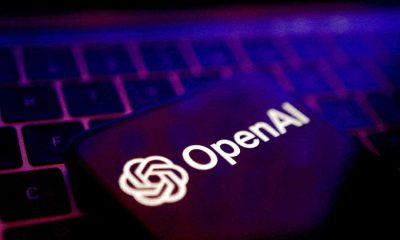
 Technology7 days ago
Technology7 days agoOpenAI releases new reasoning-focused open-weight AI models optimised for laptops – Crypto News
-

 Blockchain6 days ago
Blockchain6 days agoCrypto Market Might Be Undervalued Amid SEC’s New Stance – Crypto News
-

 De-fi5 days ago
De-fi5 days agoCoinbase Pushes for ZK-enabled AML Overhaul Just Months After Data Breach – Crypto News
-
Technology1 week ago
Will The First Spot XRP ETF Launch This Month? SEC Provides Update On Grayscale’s Fund – Crypto News
-

 Technology1 week ago
Technology1 week agoAmazon Great Freedom Sale deals on smartwatches: Up to 70% off on Samsung, Apple and more – Crypto News
-
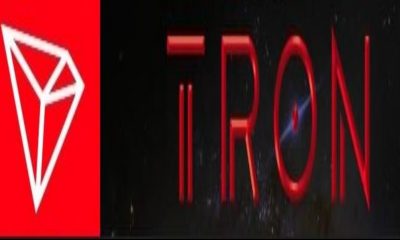
 Cryptocurrency1 week ago
Cryptocurrency1 week agoTron Eyes 40% Surge as Whales Pile In – Crypto News
-
others1 week ago
SharpLink Buys the Dip, Acquires $100M in ETH for Ethereum Treasury – Crypto News
-
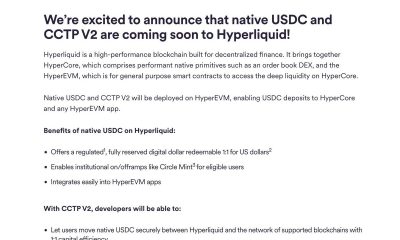
 De-fi1 week ago
De-fi1 week agoCircle Extends Native USDC to Sei and Hyperliquid in Cross-Chain Push – Crypto News
-
Business1 week ago
Is Quantum Computing A Threat for Bitcoin- Elon Musk Asks Grok – Crypto News
-

 Technology1 week ago
Technology1 week agoElon Musk reveals why AI won’t replace consultants anytime soon—and it’s not what you think – Crypto News
-

 Cryptocurrency1 week ago
Cryptocurrency1 week agoLido Slashes 15% of Staff, Cites Operational Cost Concerns – Crypto News
-

 others1 week ago
others1 week agoIs Friday’s sell-off the beginning of a downtrend? – Crypto News
-
others7 days ago
MetaPlanet Launches Online Clothing Store As Part of ‘Brand Strategy’ – Crypto News
-

 Metaverse6 days ago
Metaverse6 days agoChatGPT won’t help you break up anymore as OpenAI tweaks rules – Crypto News
-

 Technology6 days ago
Technology6 days agoiPhone users alert! Truecaller to discontinue call recording feature for iOS from September 30. Here’s what you can do… – Crypto News
-

 Technology6 days ago
Technology6 days agoiPhone users alert! Truecaller to discontinue call recording feature for iOS from September 30. Here’s what you can do… – Crypto News
-

 others6 days ago
others6 days agoUS President Trump issues executive order imposing additional 25% tariff on India – Crypto News
-
Business6 days ago
Analyst Predicts $4K Ethereum Rally as SEC Clarifies Liquid Staking Rules – Crypto News
-

 De-fi6 days ago
De-fi6 days agoSEC Says Some Stablecoins Can Be Treated as Cash, but Experts Warn of Innovation Risk – Crypto News
-
Business5 days ago
XRP Price Prediction As $214B SBI Holdings Files for XRP ETF- Analyst Sees Rally to $4 Ahead – Crypto News
-

 others5 days ago
others5 days agoEUR firmer but off overnight highs – Scotiabank – Crypto News
-

 Blockchain5 days ago
Blockchain5 days agoTrump to Sign an EO Over Ideological Debanking: Report – Crypto News
-

 De-fi5 days ago
De-fi5 days agoRipple Expands Its Stablecoin Payments Infra with $200M Rail Acquisition – Crypto News
-

 others4 days ago
others4 days agoRipple To Gobble Up Payments Platform Rail for $200,000,000 To Support Transactions via XRP and RLUSD Stablecoin – Crypto News
-

 Technology3 days ago
Technology3 days agoHumanoid Robots Still Lack AI Technology, Unitree CEO Says – Crypto News
-
Cryptocurrency3 days ago
DWP Management Secures $200M in XRP Post SEC-Win – Crypto News
-
Business1 week ago
Is Powell Next As Fed Governor Adriana Kugler Resigns? – Crypto News
-

 Technology1 week ago
Technology1 week agoAmazon Great Freedom Festival Sale 2025 vs Flipkart Freedom Sale: Comparing MacBook deals – Crypto News
-
Business1 week ago
India’s Jetking Targets 21,000 Bitcoin By 2032 As CFO Foresees $1M+ Price – Crypto News



